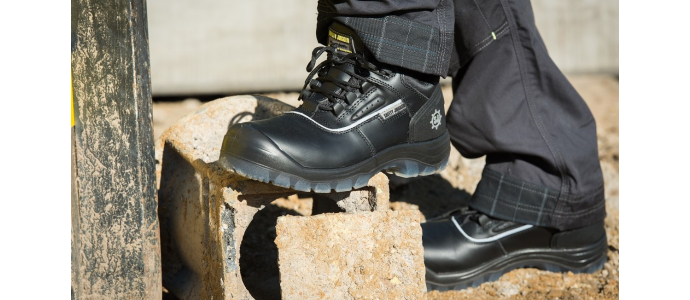
ELECTRICAL HAZARD (EH) RATED SAFETY BOOTS
Electrical hazard (EH) rated safety boots are ISOLATING safety boots meaning they provide a secondary source of protection for you from electric shocks or electrocution. The idea behind these EH rated safety boots is pretty simple, the entire surface of the boot is made from non-conductive materials and as a result no electrical charge will pass through the body, because you are fully isolated from the ground.
WHAT ARE ELECTRICAL HAZARD RATED SAFETY BOOTS?
Electrical hazard (EH) rated safety boots are ISOLATING safety boots meaning they provide a secondary source of protection
for you from electric shocks or electrocution. The idea behind these EH rated safety boots is pretty simple, the entire surface of
the boot is made from non-conductive materials and as a result no electrical charge will pass through the body, because you
are fully isolated from the ground. EH rated safety boots have an Electrical Hazard (EH) rating on them, meaning they have been
tested by the American Society for Testing and Materials (ASTM) for their protection against an electrical shock.
- In some cases, EH rated safety boots can be affected by certain factors which decreases their potential to keep thewearer safe. The excessive wear of the soles or exposure of these EH boots to wet conditions, humid conditions or bothcan reduce the effectiveness. EH rated safety boots are usually worn when working in dry areas where the potential forelectrocution is at high risk, do not wear these in wet, hazardous or explosive areas!
- EH rated safety shoes are isolating safety shoes and cannot be confused with conductive safety shoes, like ESD or antistatic safety shoes, which have a whole other purpose.
PROTECT YOURSELF FROM ELECTRICAL HAZARDS
Protection from electrocution or any other electrical hazard can be obtained in many ways. One of the most direct and efficient features to prevent electrical hazard is the use of insulating protective equipment inside safety boots.
Safety Jogger offers EH rated boots which protect from electrical hazard by insulation :
- according to ASTM-F2412
- Tested in production for 1minute at 18.000V, 60Hz, AC
- Outsoles made in specific insulating rubber or PU compound

HEALTH RISKS FROM ELECTRIC CONTACT
Electrocutions are one of the most frequent electrical hazards in construction sites. When in direct contact with electric high voltage
equipment, such as overhead powerlines or transformer cabins, electrocution can be fatal by cardiac arrest. Each year they cause
more than 300 deaths and 4,000 injuries. Electricity flows through conductors including metals, water, earth, but also the human
body. When electrical equipment is functioning properly, the circuit is maintained between the tool, the wires and the electric source.
However, in case of a malfunctioning machine or circuit, the operator can become part of the electric circuit. When in direct contact
with a “live” wire, a person can feel a tingling sensation, over an intense electric shock, to ultimately a fatal electrocution, depending
on the power, frequency and type (AC/DC) of electric source. Voltages over 50V AC or 120V DC are considered hazardous.

MAIN CAUSES OF ELECTRICAL INJURY OR ELECTROCUTION
Electric contact can occur in many ways and situations, we listed the most common below:
- defective or damaged tools, badly maintained equipment
- inadequate wiring, improper grounding
- unsafe work practice or environment
- unexpected exposition to electric parts
- contact with overhead power lines, high voltage circuits
- overloaded circuits, improper insulation













Comments
Leave your comment